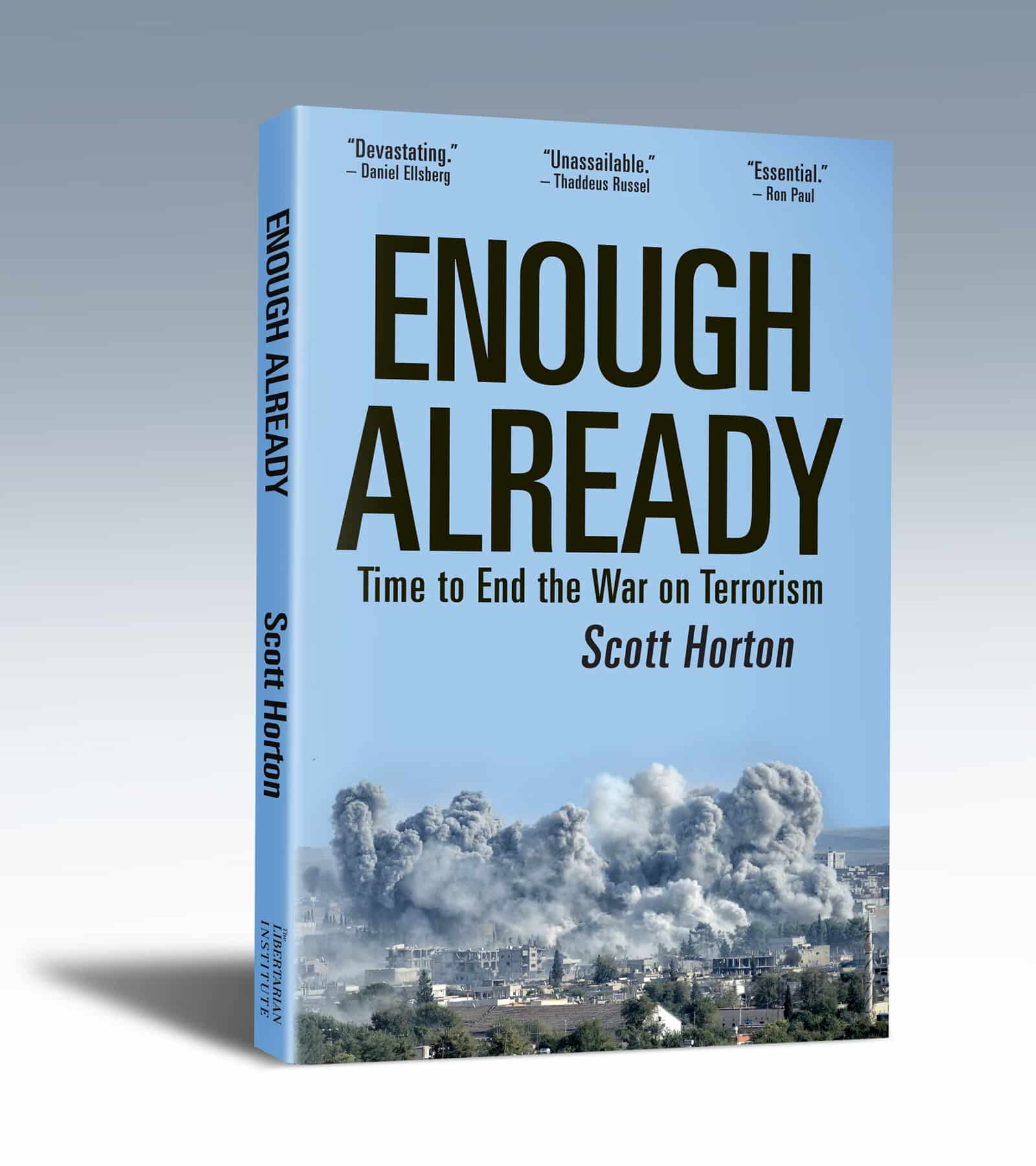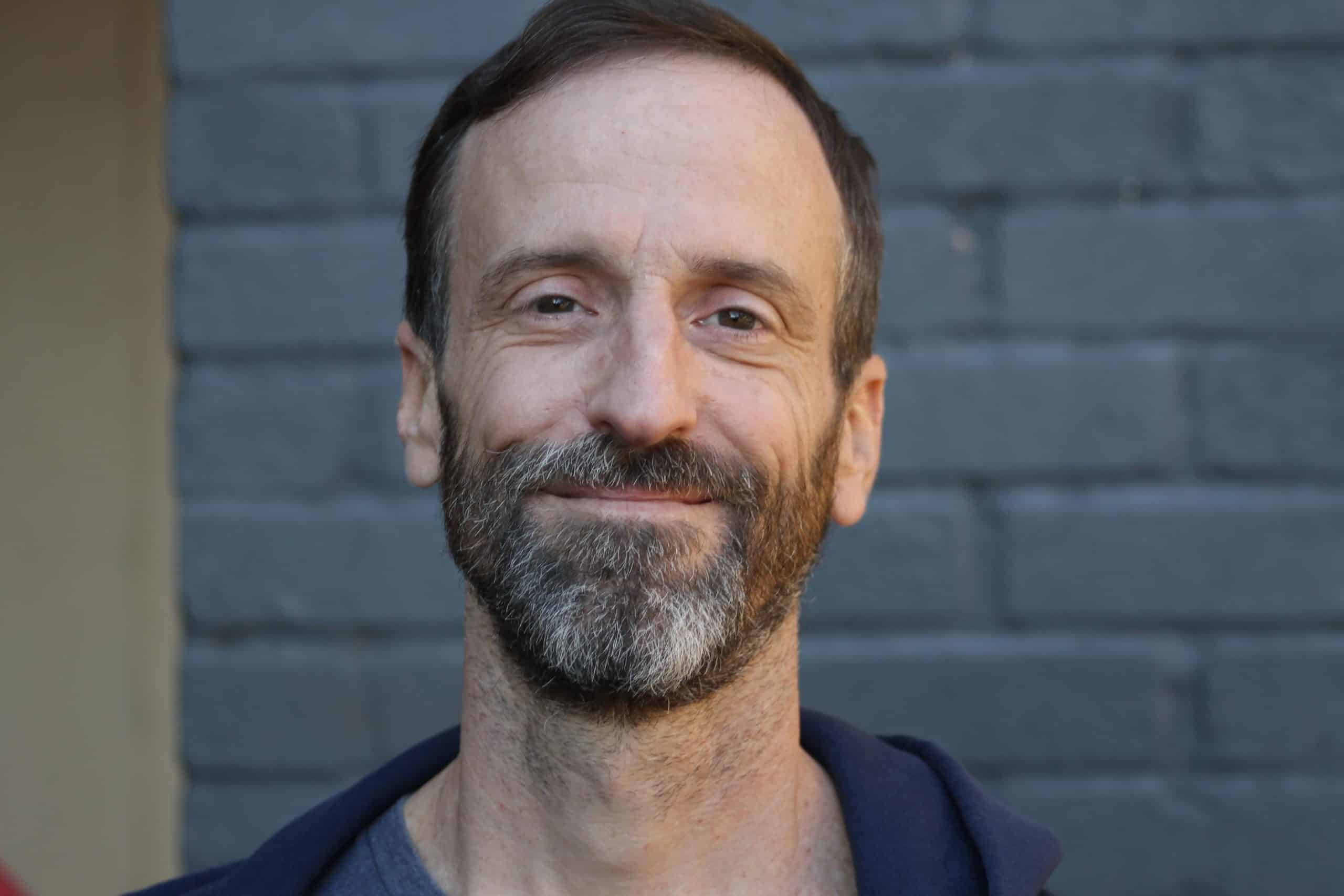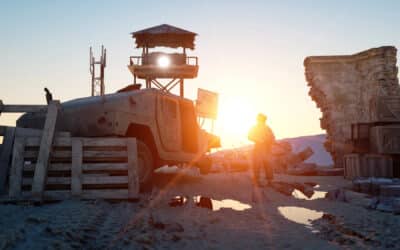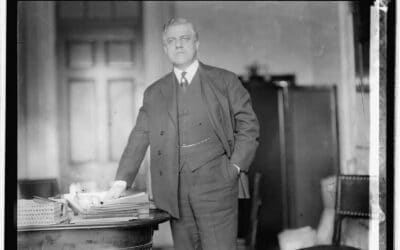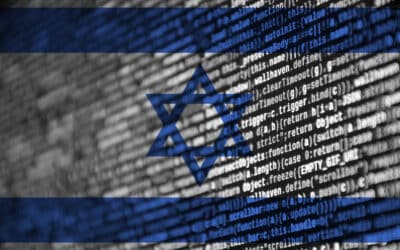This essay is adapted from the Libertarian Institute’s Executive Director Scott Horton’s new book, Enough Already: Time to End the War on Terrorism.
Freedom Works
The name “Somalia” has somehow become a slur against Americans who prioritize political liberty. “Oh, you think freedom works, huh? Well, why don’t you just move to Somalia?” This nonsense may have originated from the fact that some libertarian economists, such as Michael van Notten and Peter T. Leeson, noticed that when Somalia’s government ceased to exist after various warlords had exhausted themselves fighting over control of the country in the late 1990s, freedom was working. No power in the country had a monopoly on force, so traditional tribal methods of dispute resolution were being used instead. There was no authority to collect tariffs at the ports of Kismayo or Mogadishu, so the economy was booming. The cell phone industry, which was a huge marker of progress, was also growing rapidly in Somalia, greater than anywhere else in that part of Africa.
As Mary Harper wrote in her book Getting Somalia Wrong?: Faith, War and Hope in a Shattered State,
Although living standards in Somalia were low by Western standards, they compared fairly favourably with those in other countries in Africa…Telecommunications have improved dramatically since the fall of central authority, with Somalia moving from twenty-ninth to eighth position in the list of African countries.
One positive side of “statelessness” is that Somalia has benefited from the absence of restrictive and over-bureaucratic business laws and other regulations that are so prevalent in other parts of Africa, stifling the spirit of entrepreneurship and inhibiting growth….Many commentators have noted that the Somali civil war ironically resembled, in its outcomes, a radical structural adjustment program: it entirely freed the economy from state regulation – liberalizing foreign trade, freeing exchange rates, eliminating subsidies, destroying the public sector, and privatizing parastatals.
No, it was not perfect. It was Somalia. They had been ruled by the brutal American-backed Communist dictator Siad Barre until 1991. The country was essentially coming up from nothing. And in the scheme of things, they were doing okay without any single power leading it all.
But the U.S.A. canceled all that back in 2001.
The violence there since that time has been the result of intervention by the U.S. military and CIA. American power, not freedom, has brought this small, poor country out of anarchy and back into chaos and destruction.
Even if there had been a strong central government in Mogadishu, they obviously could not have held off the U.S. and its allies in the Ethiopian army, which invaded in 2006. In fact, it was the eventual consolidation of a central government in reaction to the CIA’s violence which had provoked the invasion and Somalia’s destruction.
A Vicious Cycle
Just after the September 11th attacks, the CIA and Joint Special Operations Command (JSOC) – that is top tier special operations forces – went to Somalia and started hiring the very warlords who had been America’s antagonists during the infamous “Black Hawk Down” disaster of 1993. In that case, local fighters assisted by Osama bin Laden’s men took revenge against the Americans for horrifying war crimes committed against Somali civilians, including children, by United Nations “peacekeepers” from Canada, Belgium and Italy. But with the advent of the War on Terrorism, Hussein Mohamed Aidid, the son of then-enemy Mohamed Farrah Aidid, and other local thugs, were hired by the CIA to hunt down and kill Islamist terrorists. What happened instead was the warlords took the money and guns and did whatever they wanted, fighting against their own enemies and for their own power at the expense of the Somali people. That is why they are called warlords. They may have turned up with the scalp of a jihadist here or there, or claimed so to the Americans every once in a while, but they were mostly using the money and weapons to fight amongst each other and oppress the locals. The situation grew progressively worse in a cycle where local militias would fight against these warlords and drive them back. The warlords would then come to the CIA, claiming the resistance to their criminality only proved how many enemies were out there. They would then receive more money and weapons for the effort. This pattern continued until finally, in 2005, 13 separate groups joined together into the Islamic Courts Union (ICU). They succeeded in driving the warlords across the border into Ethiopia later that year.
It should be noted here that virtually all of this story takes place in southern Somalia. The northern regions of Somaliland and Puntland have their own problems, including piracy, but nothing like this.
In the summer of 2006, the CIA renamed their favored warlords the Alliance for the Restoration of Peace and Counterterrorism (ARPCT). This provoked a massive popular reaction in favor of the insurgents. All across southern Somalia, tribal leaders, businessmen and the traditional courts united into the new ICU, renamed the Supreme Council of Islamic Courts (SCIC).
It is possible the SCIC had some aspirations toward Talibanism. They were accused of closing a local movie theater in Mogadishu and banning female employment outside the home, but they had no power to enforce a real authoritarian state. Also, it turned out that the movie house rule only applied in the morning because kids had been skipping school and had nothing to do with Islamism, and the rumors about women being banned from working were false. Somalia is a Muslim country, but their traditions are nothing like the Hanafi Muslim Pashtun culture in Afghanistan or the Wahhabist absolutism of America’s Saudi allies. There were no real al Qaeda members around, but the SCIC had the word “Islamic” in their name. That was enough for George W. Bush.
Ethiopia Invades
The U.S. encouraged the Ethiopians to invade and smash the SCIC at the end of December 2006. The CIA and special operations forces backed up the invading army with C-130 gunships, strafing and bombing innocent people, a war crime. Americans also labeled anyone who was running for any border to escape the violence as a terrorist, some of whom were subject to “extraordinary rendition” to Ethiopia, including one American citizen.
The Washington Post claimed that this was all justified not because the Islamic Courts Union has the word “Islamic” in it. That would be overkill. No, the war was launched because the FBI said there were three al Qaeda “suspects,” who were “wanted for questioning” in the case of al Qaeda’s 1998 African Embassy attacks, Fazul Abdullah Mohammed, Saleh Ali Saleh Nabhan and Abu Talha al-Sudani. Back in the 1990s, terrorism was still considered a job for the Justice Department and the FBI. Federal agents were even being deployed overseas to try to arrest and prosecute al Qaeda plotters. After September 11th, Dick Cheney decided the days of filing criminal charges and empaneling grand juries were over. But these three guys, still wanted by the criminal justice system, were cited by the government as their excuse to launch a devastating war of regime change in Mogadishu with Ethiopian proxy forces.
The war against the Islamic Courts was over very quickly. But a new enemy is the target in Somalia now. When the 13 groups came together to compose the ICU-SCIC government, the least-influential of all the groups had been the youth, “al-Shabaab.” The elders and local authority figures were in charge. But when the Ethiopian army, backed by the United States, invaded and destroyed the fledgling state, who picked up rifles to fight? The youth.
Al-Shabaab are not really international terrorists, but they are sworn bin Ladenites, in word if not in actual form. Though they have not targeted the United States, they have grown from nothing into something that is certainly dangerous to the people of Somalia and the region. They are the effect of, and now the ongoing reason for U.S. intervention in the country.
Somalia expert Bronwyn Bruton wrote of the American role in the war:
From the beginning, the United States was viewed as a not-so-hidden partner of Ethiopia. Besides its public support for the Ethiopian invasion, the United States launched a series of missile attacks on fleeing SCIC leaders in January 2007. The missiles failed to hit their targets, but caused scores of civilian casualties, and inextricably linked the United States to Ethiopia’s occupation and subsequent human rights abuses by the TFG [Transitional Federal Government], Ethiopian, and African Union forces. These abuses included rape, kidnapping, mortar fire on civilian hospitals and media houses, and indiscriminate shelling of civilian crowds in response to insurgent attacks.
It has been a bitter war. Tens of thousands have been killed in the violence. At various times al-Shabaab has even ruled the major cities of Mogadishu and Kismayo.
In 2008, with the clock running out on the Bush administration, Secretary of State Condoleezza Rice announced that Sharif Sheikh Ahmed, former leader of the Islamic Courts Union, could go ahead and be the president after all. But he would have to accept the role of president of the “Transitional Federal Government” that the U.S. and UN had created for Somalia instead of the old ICU-SCIC. “It would be preferable to co-opt a weak Sharif Sheikh Ahmed, to prevent hardliners from rallying around him,” Assistant Secretary of State Jendayi Frazer explained. America had launched and fought a two-year war up to that point just to say that the guy they overthrew can actually go ahead and be in charge anyway. Sharif took the deal. The U.S. kept him as the president through 2012. He is now known, at least in the West, as “The Father of Modern Somalia.” The whole war had been for nothing. Not that it is over yet. Al-Shabaab quickly denounced Sharif as a traitor for bowing down to America and their Ethiopian proxy and vowed to fight on.
Starving
Sadly, the worst part of the war has been the weather. Drought came in 2010–2012 and again in 2015–2017. Crops failed across the whole Horn of Africa, but Somalia was hit the hardest because they were at war. The farmers had not had a chance to sow their crops or to harvest them. They had no transportation, so whatever crops could be grown could not reach the market, which was closed anyway because no one had any money. The entire system of food distribution and services in Somalia completely broke down. People were lying down and dying in refugee camps on the sides of the highways. A quarter of a million of them had starved to death by the beginning of 2013. The Famine Early Warning Systems Network (FEWSNET), a U.S. and UK-backed non-governmental organization (NGO) that keeps track of global famines, said that more than half of the 250,000 who had died were children under five years old. The elderly were also among those hit hardest by the mass starvation. A million people had been driven from their homes.
America helped to reduce Somalia to the most desperate state. Then in 2011, President Obama sent President Bill Clinton’s old friend and national security adviser, Anthony Lake, to take charge of distributing international food relief. These efforts fell far short. The food relief did not get to the starving people out in the countryside. The warlords seized it all to feed their soldiers and sell the rest. Also in 2011, the Kenyan invasion disrupted the distribution of food aid. This has been one of the worst humanitarian crises of this century, inflicted by the most powerful nation in history against one of the weakest – people who have done nothing to us. In 2017, FEWSNET reported that mortality and under-five mortality rates remained at emergency levels. In 2020, the Cost of War Project estimated that 46 percent of Somalia’s population have been displaced since the U.S. began its latest intervention at the dawn of the War on Terrorism.
‘No Choice’
Al-Shabaab seized the southern port city Kismayo in 2008 and began clear-cutting for their industry in black market charcoal which contributed to the famine as well. In 2012, Kenyan troops took Kismayo from al-Shabaab and drove them out. However, separating them from their revenue had the perverse effect of forcing them to turn to funders in Saudi Arabia and elsewhere for support. They finally declared their allegiance to al Qaeda, six years into the war, to secure Saudi donors. There is no real reason to consider al-Shabaab to be actual bin Ladenite international terrorists. Though they have hit targets across borders in Kenya and Ethiopia, these represent military and reprisal attacks against their direct opponents in the war.
The Ethiopian army was driven out of Somalia in 2009, but have since returned along with Burundi, Ugandan and Kenyan forces acting under the auspices of the African Union, with America footing the bill. Al-Shabaab’s terrorist attacks against civilian targets expanded to Kenya and Ethiopia in response.
Two separate “black sites” – secret, illegal prisons – have been revealed by American journalists, one in the capital of Mogadishu and one in the northern province of Somaliland. In both cases prisoners were reported to have been tortured. Both are run with the help and cooperation of U.S. intelligence agents and officers.
All through the Obama years, he used CIA and Air Force drones, special operations forces and even fired cruise missiles from submarines in the effort to fight al-Shabaab. Hundreds of innocent people were killed. Dozens of Somali-Americans have reportedly traveled back to their home country to fight with al-Shabaab. Fortunately, none have yet decided to wage their part of the war here in America. However, in late 2020, the Justice Department charged and accused a Kenyan member of al-Shabaab of, they claimed, training to fly an airliner for the purpose of attempting a September 11th-type suicide attack on the United States.
President Trump escalated the war, expanding the number of airstrikes, special operations forces – both those fighting al-Shabaab and those training the Somali national army – and sent regular infantry there as well. He also signed orders designating Somalia as an active war zone, devolving strike authority lower down the military chain of command and removing some restrictions on who can be targeted.
But, at least according to the Washington Post, this was all despite the fact that Trump did not want the U.S. there at all. He complained about the Army’s useless mission in far-flung Somalia. “Can’t we just pull out?” the president repeatedly asked his staff in 2017. “You have no choice,” replied then-Secretary of Defense Mattis. So, Trump escalated the war, killing many but accomplishing nothing. In his term, Trump’s administration launched more drone attacks on Somalis than Bush and Obama’s combined. Terrorist attacks and territory held by al-Shabaab only increased.
Jason Hartwig, a former military assistance coordinator for the U.S. mission to Somalia, told the author there is no way the U.S.-created government in Mogadishu can defeat al-Shabaab without a massive, cost-prohibitive effort. The reality is that the situation, like Afghanistan, is worse than a stalemate. The initiative is with the indigenous insurgents. The mission to train up a new army has failed. Without the African Union Mission in Somalia (AMISOM), made up of Ethiopian, Ugandan, Kenyan and Burundian troops there to support the regime, it would fall to al-Shabaab “very quickly.” That is because the government the U.S. has installed has little popular support. Mary Harper writes that the government “is known by the derogatory Somali nickname daba dhilif, which translates roughly as a ‘government set up for a foreign purpose’ or a ‘satellite government.’” Bronwyn Bruton explains that the U.S.-installed regime uses false accusations of association with the terrorists as an excuse to do whatever they want. “The Somali government often uses the al-Shabaab charge to wipe out people either to get the land they want or out of clan rivalry.” Ugandan and Burundian troops have been credibly accused of raping Somali women and young girls. The current president was working at the Department of Transportation in Buffalo, New York, before the CIA dropped him in place to be the face of the national government. The people there are not going to submit to this any more than we would.
Ahmed Abdi Godane, leader of the al-Shabaab faction with the most extensive ambitions, was killed by a drone strike back in 2014. The war in Somalia is really a civil war and should be treated as one. America and its allies should simply withdraw and let the negotiations begin.
Without foreign intervention creating the pressures that hold the al-Shabaab alliance together, it is more likely that clan-based conflict resolution would return as the dominant tradition. As Bruton wrote,
Previous attempts by jihadist groups to govern Somalia have foundered against the Somalis’ hostility to restrictive, non-Somali religious edicts and the inability of foreigners to operate within the clan system. During the 1990s, an al Qaeda-linked group called al-Ittihad controlled a significant portion of southern Somalia, but quickly faced resistance and became defunct – without any intervention by the United States.
Even if al-Shabaab ends up taking over the whole southern part of the country, they will have every incentive to try to get along with America. The ICU tried to deal with the U.S. back in 2005, and many members of the current government are former ICU and SCIC members. Victory against their forces is not in the cards. So what are we still fighting for?
It does not matter one bit to the American people, or even “U.S. interests,” broadly defined, who rules the Horn of Africa. It is in no one’s interest to close the gates of the Red Sea, nor could any force on this planet resist the U.S. Navy if it came to a contest of arms.
Before the 2020 election, Trump’s staff leaked to Bloomberg News that he wanted to withdraw from Somalia. He could have simply commanded it to be so. Instead, after the election, in December 2020, Trump’s Defense Department announced they were pulling “the majority” of troops out of Somalia. They quickly clarified, “While a change in force posture, this action is not a change in U.S. policy.” The troops are being moved to Djibouti and Kenya instead. Anti-al-Shabaab missions are to continue indefinitely.


